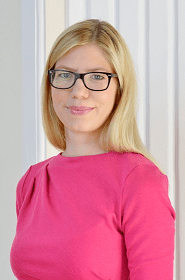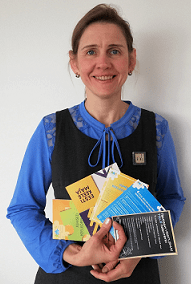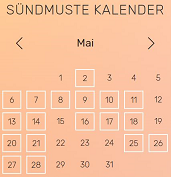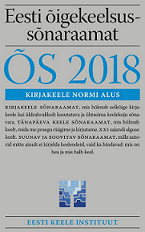1. INTEGRATION DEVELOPMENT
2. INTEGRATION ACTIVITIES
3. INTEGRATION CALENDAR
4. OUR NEWS
5. YOUR OPINION
Three ways to participate in shaping “Lõimuv Eesti 2030”
 Piret Hartman, Undersecretary for Cultural Diversity at the Ministry of Culture, talks about ways to participate in shaping the programme for the upcoming 10-year integration plan.
Piret Hartman, Undersecretary for Cultural Diversity at the Ministry of Culture, talks about ways to participate in shaping the programme for the upcoming 10-year integration plan.
Why is it important to update the integration plan by preparing the sectoral development plan “Lõimuv Eesti 2030”?
Because we, the current and future inhabitants of Estonia, deserve a cohesive society where everyone can be successful regardless of their linguistic and cultural background. And for that, we need a kind of covenant that we all agree on as far as what we are working toward and how we accomplish it. Activities as fundamental as these really ought to be planned in the long-term. This idea led to the decision to address the development of integration through a white paper called “Lõimuv Eesti 2030” and to involve the possible implementers and those who want to have a say on the topic in compiling this document.
What has already been done to this end?
We started drafting “Lõimuv Eesti 2030” by meeting government officials and researchers. The basis for the discussion was results of research and monitoring of the current development plan and we set the task of mapping the goal and possible directions for integration in the future.
To sum up, last year we defined the general objective of the next development plan: to establish conditions for Estonian society to be integrated and socially cohesive. The vision is that people with a different linguistic and cultural background take part actively in society and share democratic values. We also mapped six primary activity areas: a strong and trust-based bond with Estonia; close contacts between people and between communities; economic prosperity and enterprising attitudes; effective learning of Estonian; a common media space; and learning together. We posted all of the information under the corresponding heading on the Ministry of Culture website. It includes a timetable for preparing the development plan, making it possible for everyone to take part in the drafting process.
This year, we continued discussions. First of all, we introduced the main activity areas and charted today’s problems and the potential solutions by each activity area related to integration. For this purpose, we invited representatives from youth organizations, employers, education sector, sports, start-ups and media for a series of brainstorming breakfasts. All of the results can likewise be found on the Ministry of Culture website.
What steps lie ahead now?
We are ready to hold additional brainstorming breakfasts. Above all, these will take place at the initiative of people interested in pitching in for the preparation and implementation of “Lõimuv Eesti 2030”, be they inhabitants of a given region, media editors or youth organization members. The contact details for submitting a proposal can be found on our website.
In autumn, we will tour the counties for public discussions to map the problem areas and solutions by each region. People-to-people contact with inhabitants will be an important aspect.
The suggestions and ideas heard at the discussions in each county will be added to the draft development plan, which we plan to present to the partners at year’s end. In 2020, we will introduce the document to Riigikogu (Parliament) factions and committees to secure political approval.
How can Estonian inhabitants and associations submit their suggestions?
One option is to use the form on the website. Another is to hold a brainstorming breakfast. A third possibility is to take part in a county discussion in the autumn. If you would like to get involved in some other format, we’ll be happy to consider those proposals, too.
Any other way to assist in updating the integration plan?
Contributing ideas in the discussion and sharing information, and implementing the changes, because “Lõimuv Eesti 2030” is a living document – the document and its implementation will be made up of the activities that we all consider necessary and carry out.
The Integration Foundation provides consultations on living in Estonia and speaking Estonian

Senior adviser of Integration Foundation Kätlin Kõverik talks about to whom and on what issues consultations are provided.
To whom does the Integration Foundation provide consultations?
All adults who wish to live in Estonia or speak Estonian and who need clear information or practical support in this area. Some of our clients are people for whom Estonia has become or is becoming their new homeland. The others are Estonian inhabitants who are native in languages other than Estonian or who know people who speak a non-Estonian native language. Yet another contingent knows people who have settled in Estonia or are in the process of doing so, and people who wish to improve their Estonian skills.
In other words, our consultation clients may include a housewife in Sillamäe who are looking for ways to practise Estonian. Or a specialist from Belarus who has been hired by an Estonian start-up, and the specialist’s spouse. Or a company HR specialist who coordinates the process of adaptation for foreign workers. Or a daughter who is thinking about her mother and father moving from Ukraine to Estonia. Or the head of a household that lived in Finland and is making preparations to return to Estonia.
What are the most frequent questions we provide advice on? What other questions are we prepared to respond to?
Often we are approached with one question, then other additional questions come to light. For the most part, the first question pertains to learning or practising Estonian, and the next ones are about employment and adaptation.
For example, someone calls and asks when registration for free Estonian courses will start. In the course of the conversation, it turns out they want to change to a new job, which they’ve heard requires a certificate of a higher level of proficiency in Estonian. In such a situation, we advise them that there are also other free ways to learn Estonian. To help the person choose the most suitable method, level and time, we first analyse their existing level of Estonian. At the same time, we help them determine what level of Estonian they need certification for.
As another example, I’d bring up the situation where a family has moved from Finland back to Estonia. The mother of the family complains to us by email that children can’t get a place in the regional preschool or school. From the conversation, we learn that all of the family members have Finnish residency (in other words, their place of residence is registered in Finland) and they are still making inquiries into ways to reboot their life in Estonia. In such a case, we explain how all of the family members can become Estonian residents and then start their work and studies. We also provide support in matters that come up on a running basis, such as how to designate one’s general practitioner.
How long do we offer such service? Who provides counselling service?
Close to four years. Over the preceding 17 years, our foundation provided counselling to people as part of projects. For example, during 2013-2014, our foundation was a source of support to third-country citizens arriving in Estonia.
Today, our foundation’s team staffs seven counsellors – Liina Leetsi, Olga Žukova, Kaire Cocker with me in Tallinn’s Estonian Language House and Olga Tihhonova, Jelena Kulpina, Maria Smirnova in Narva’s Estonian Language House.
Who has to do what to get counselling service from us?
We can be contacted by telephone at 800 9999 (toll-free) or writing to info@integratsiooniinfo.ee. We recommend visiting our website first – the Counselling Web is a useful central source of important information and can help you to word your question more precisely. We are happy to provide service in Estonian, Russian and English.
 You can choose events which are organised, assisted or supported by our Foundation to participate in May and June 2019 at the website event calendar.
You can choose events which are organised, assisted or supported by our Foundation to participate in May and June 2019 at the website event calendar.
You can read the latest announcements of our Foundation at our website, Facebook accounts of Integration Faoundation or House of Estonian Language.


What are your expectations to our newsletter?
Dear reader of the Integration Foundation newsletter,
To allow us to better customize our foundation’s newsletters to your interests, we’re asking you to take 5-10 minutes of your time and answer six questions by using this link.
If you respond before Wednesday 15 May, you can win Dictionary of Standard Estonian.
Thank you in advance!
